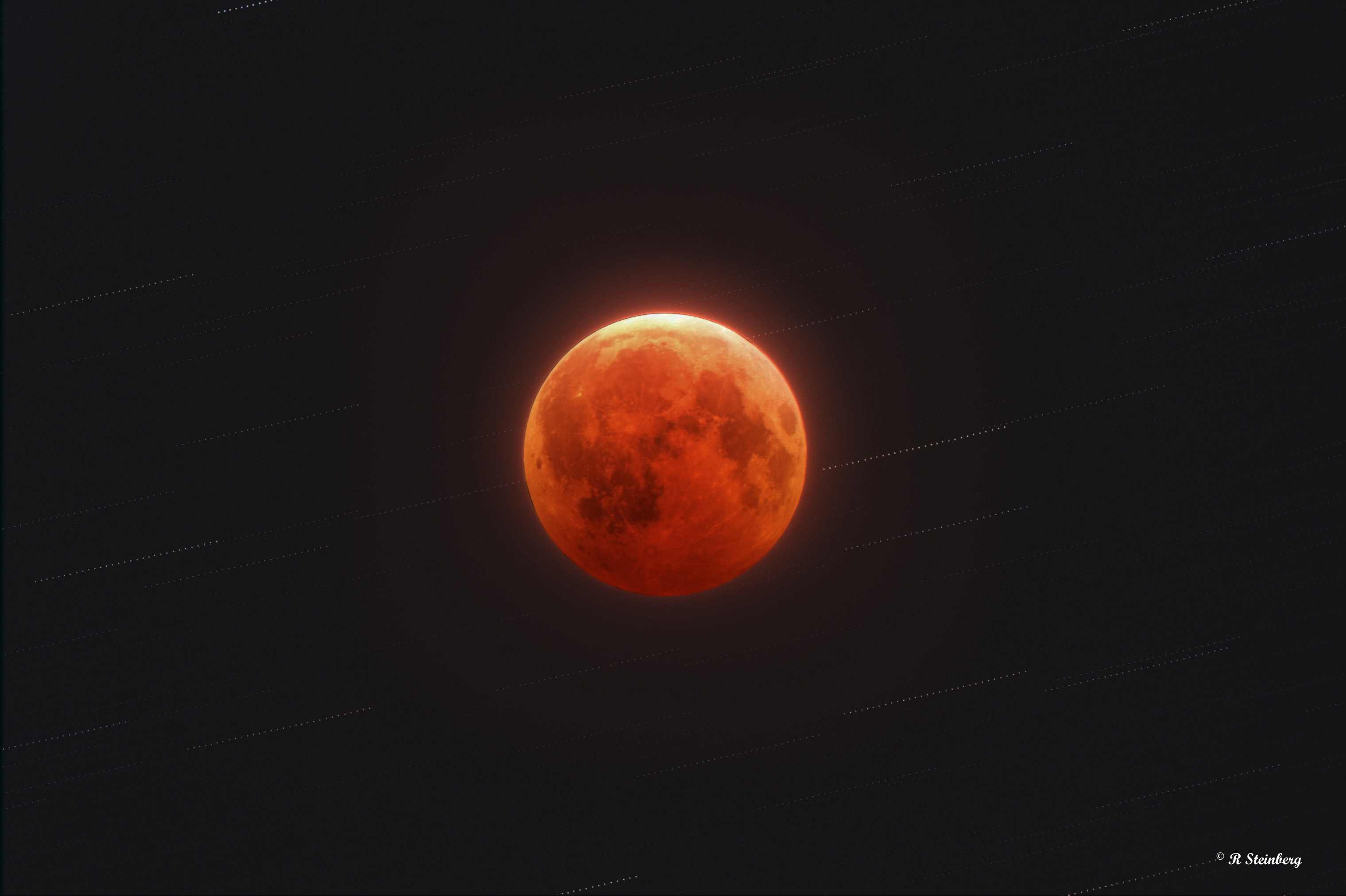
Motion of the Moon During the December 2010 Eclipse
North is up in the image. Since the eclipse occurred very nearly at the time
of the winter solstice, the ecliptic (the apparent path of the sun against the
stars) was oriented nearly exactly east-west (horizontal in the image).
The 13.1° angle of the apparent motion of the stars is caused by a combination
of (1) the 5.1° inclination of the moon's orbital plane with respect to the
ecliptic plane and (2) the topocentric correction (8.0°) due to motion of the
observatory with respect to the earth-moon barycenter.
For very distant objects (>> 1 AU), the topocentric correction is small and
often neglected. For objects such as near-Earth comets and asteroids and,
evidently, for the moon, there can be a substantial difference between the
topocentric and geocentric systems.
Image details:
telescope: Takahashi FSQ-106N four-inch refractor, focal length 528mm
mount: Paramount ME equatorial
camera: Orion StarShoot Pro V1 - image scale: 3.05 arcsec/pixel
site: Blue Mountain Vista Observatory (New Ringgold PA) - acquisition and processing: MaxIm DL 5.10
Observation date: 2010-12-21 UT 08:10:11
Photoshop combination of low-stretched and high-stretched versions of a stack of 31 eight-second exposures aligned on the moon.
For full size image, click here